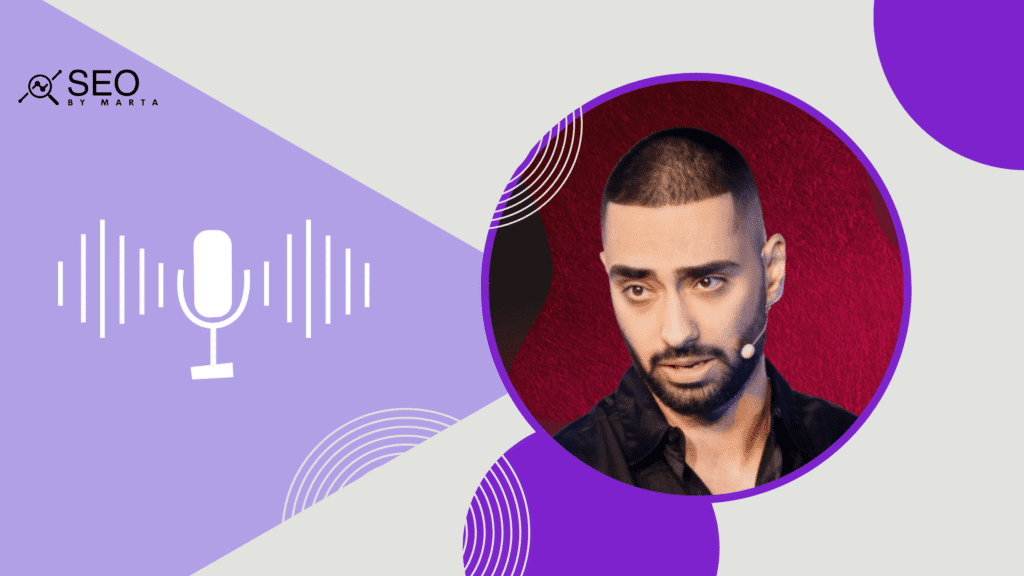Google Multitask Unified Model (MUM) will change the Search experience for Google’s search engine users. Google’s Search On team already announced this new AI-based algorithm for understanding information in May 2021 during the Google IO Conference. The MUM model is one of the most significant updates since 2019, and it will impact Search Engine Optimization in the near future. In this blog post, I will cover:
- What is the Google MUM update, and how does it work?
- How is the AI technology helping Google be the number one Search Engine worldwide?
- What is RankBrain, the NLP Google BERT update?
I will also explain how SEOs and online marketing professionals can prepare for Google’s MUM.

What is Google Mum?
Multitask Unified Model (MUM) is a new artificial intelligence technology developed by Google to understand natural human language and to redesign Google’s search page aiming to improve users’ search experience. This new algorithm AI update significantly upgrades the latest BERT update, which was groundbreaking in its own right.
TOP 3 Facts about Google’s MUM
- With the MUM model, Google wants to improve the search experience for more complex search queries.
- The launch of MUM will allow the Google search engine to understand complex search queries and their intent almost like a human would.
- At the moment, Google doesn’t use the MUM model for rankings in SEARCH. It is only used for the Covid-19 vaccine in video search for related videos in 50 languages.
How does Google MUM work?
As a machine learning technology, MUM not only understands language but also generates it. Here are the essential features of this update:
- It is multilingual – it is trained across 75 different languages.
- It is multitask – it can execute many different tasks at once, allowing it to develop a more holistic understanding of information.
- It is also multimodal– it can understand information across text, images, video, and podcast.
At the same time, the MUM model will redesign the search results page by adding features like:
- Things to know
- Refine this search
- Broaden this search

A Real-World Example of how MUM works with Google Lens
Imagine that you want to dance salsa and you don’t know what are the best shoes for the salsa classes. You don’t necessarily want to buy new shoes. You take a picture of your favourite shoes that you have at home, upload the photo to Google Lens, and ask, “Can I dance salsa in those shoes?“… And BOOM Google will provide the correct answer.
It will:
- Understand the information in the picture and the intent behind it,
- Search across different languages for examples of perfect models of shoes for salsa dancing;
- Compare them with the model on the picture, and
- Generate correct suggestions if my shoes are not suitable for dancing salsa.
Or this is at least what I imagine will happen once MUM rolls out completely.

Google and AI
Artificial intelligence, or AI, is a computer system that is designed to learn and make connections on itself. AI, as a technology, allows us to make decisions and solve problems with the help of machines and their superb processing power. Search engines worldwide understood very early that Artificial intelligence is the only way to understand and process big amounts of data. AI can be used, for example, in image or speech recognition, machine translation, and natural language processing (NLP.) Google’s mission is to provide high-quality answers to questions. When one looks at the numbers, this mission becomes much clearer. There are around 5,6 billion searches on Google every day (63,000 search queries every second). Add to this the fact that Google controls 95% of the search engine market share worldwide. The goal of the Google Search On team is to help deliver better and faster results to user searches and to stay the number one search engine in the world. This is what made Google the best search engine in the world in the first place, even though it came much later than most (for example Yahoo.) Simply put, Google beat its competition by being better at answering the user’s queries.
The most important aim here is that the results match the user’s intent. If Google understands the intent properly, it can provide the correct result, meaning its search engine is functioning well. AI technology and machine learning have been used by Google for years in order to improve search engine functionality. In all reality, AI has permanently changed the way search works. Thanks to it, we are getting, for example, custom search results based on our past behaviours, our devices, or even our location. Every time we search for something on Google, artificial intelligence and machine learning are working behind the scenes to generate the best response to our search based on millions of data points.
Google RankBrain Update
In 2015, Google introduced one of its most impactful AI-based innovations- RankBrain. Since then, the Search team continued to improve the AI technology to understand natural human language better and improve the search results even further. Before RankBrain, Google’s algorithm was hand-coded and matched the words in the search query to the comments on a page. The result wasn’t always satisfying the user intent behind the search. With RankBrain AI, Google algorithm started to understand search queries better. It also started to provide results based on user satisfaction, because it started to measure how people interacted with the results. A high CTR and good engagement on a page for a particular keyword was rewarded with better rankings. Naturally, a high bounce rate and low dwell time resulted in a ranking drop. Rooted in machine learning, RankBrain learned how and why people search, and then applied those conclusions to future search results. Rather than being pre-programmed, it was able to update itself over time.
Google BERT Update
In 2019, Google announced another big update – BERT, short for Bidirectional Encoder Representations from Transformers. BERT’s goal is to match search results with intent. To understand BERT, you need to understand that what is obvious to humans can be difficult for computer programs to process. Understanding context, tone, and intention were the main goals of this update. BERT was designed to better understand the nuances and context of words in searches and better match those queries with more relevant results in Search and featured snippets.
BERT was playing a big part in natural language processing (NLP) as well. Needless to say, BERT and NLP had a significant impact on SEO. NLP is an AI that provides computers with the ability to read and understand language. The concept changes the way search engines understand queries as a whole, and each word separately. There are several orthographical aspects like spelling mistakes, spacing symbols or words that are both nouns or verbs, that make it hard for computers to understand natural language. This is precisely where NLP helps to find the real meaning in sentences regardless of the linguistic errors. With BERT, all words are also taken into account, and this changes the results. The model understands that different words have different meanings depending on what’s around them. The new AI update – MUM is a continuation of the BERT update. Google itself said that MUM is 1,000 times more powerful than BERT, and it can execute complex tasks at the same time.
What will change with Google’s MUM?
Google MUM AI technology works in a way that generates search results based on understanding and processing content, images, videos, and audio (podcasts) across 75 languages. MUM is one of the first AI models to solve complex multimodel questions. Once launched across the Google search engine, this new technology should:
- Reduce the need for multiple searches
- Give users a more holistic search experience, answering even the most complex queries
- Provide better search results that match the user’s intent.
With MUM, the borders of language in Google Search will fade even more. The page with the best content and best answer to users’ questions will rank everywhere with the Google MUM algorithm, no matter of the language it was initially targeting. Google’s Search On team also expects with the update that users will start to use Google’s Lens more and that this will also increase the number of visual searches.
How can you prepare for Multitask Unified Model (MUM)?
There is no magic in SEO, only hard work and the best user experience that brings you to the top of the SERP. If you think MUM will change that premise, you are probably wrong. This AI update is in fact another confirmation that high-quality content written by experts still matters. We can not really prepare 100% for any Google update, but in order to be a bit more ready for Google MUM, it is important that we keep high standards in:
- Understanding the questions our users may have and the real intent behind them.
- Focusing on creating topic authority and covering the topic in detail.
- Investing in different media like unique images and videos in our content.
Artificial intelligence is also increasingly used by SEOs and webmasters. There are a lot of AI-based tools on the market but we need to exercise caution and take them with a pinch of salt. Remember, there are no SEO shortcuts. If you are not an expert in the topic your website is about, you need to hire an expert. Google rewards content that demonstrates high levels of expertise, authoritativeness and trust (E-A-T). Auto-generated content will not replace a human that is an authority and expert on a topic. At least not yet.




